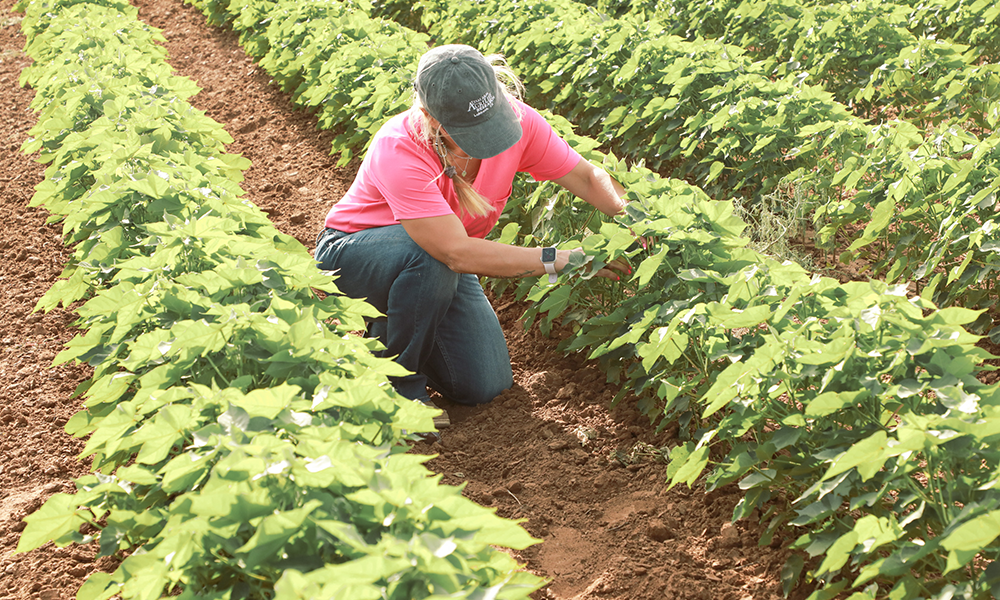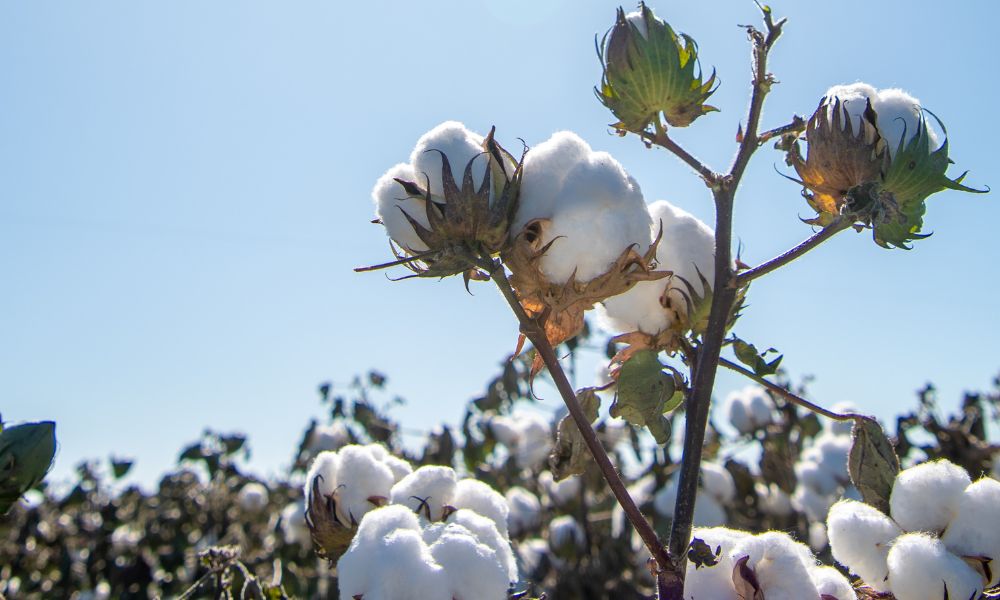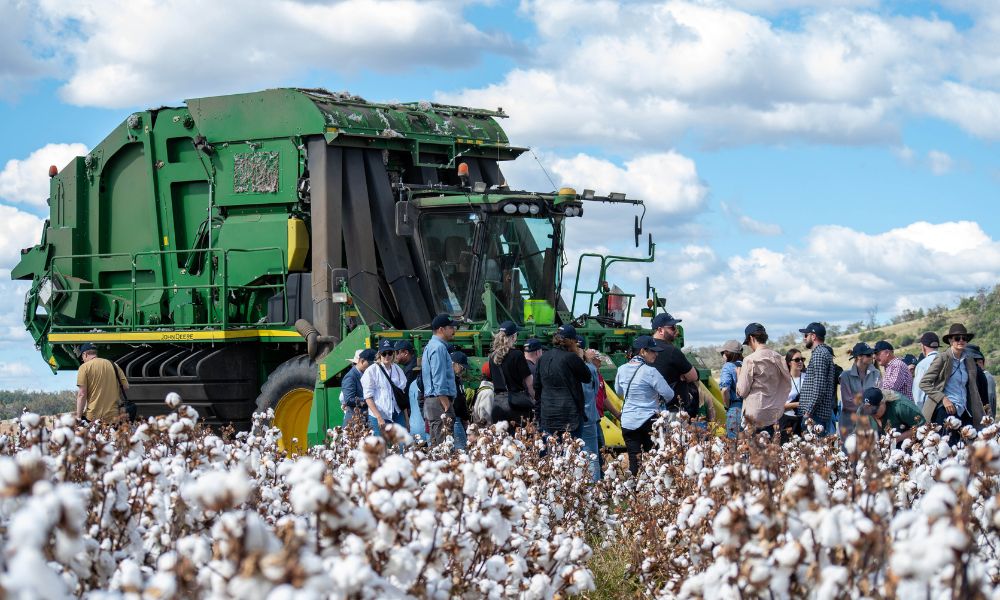U.S. Cotton Trust Protocol Releases Inaugural Annual Report
February 3, 2022
The standards system for sustainably grown cotton attracted 560 members in its first year
Late last year, the U.S. Cotton Trust Protocol released its first annual report, detailing its achievements over 2020 and 2021. In little more than a year, the protocol established a system tracking sustainably grown cotton from scratch and attracted 560 member organizations from across the supply chain.
The annual report provides a complete overview of the protocol’s programs supporting U.S. cotton growers to deliver against science-based sustainability targets and improve their performance in six key metrics including land use, soil conservation, energy use, greenhouse gas emissions, soil carbon and water use.
U.S. Cotton Trust Protocol’s Impact on Cotton Sustainability
The U.S. Cotton Trust Protocol aims to bring metrics to sustainable cotton farming so every member in the U.S. cotton supply chain gains transparency about their environmental impact. The protocol provides the only farm-level sustainability data on cotton in the U.S. and article-level transparency on sustainable cotton fibers. They have set measurable goals across six metrics to validate sustainability performance, as well as goals for increasing their membership and footprint.
Cotton Bales: Enrolled approximately 950,000 cotton bales, representing 6% of all U.S. cotton grown in 2020/21. They aim to bring on 3 million more bales in 2021/22 and 50% of the cotton grown in the U.S. by 2025.
Membership: 525 mills and manufacturers joined including global apparel manufacturer Gildan and 37 brands and retailers joined including Levi Strauss & Co., PVH Corp (Calvin Klein and Tommy Hilfiger), and Gap Inc. (Old Navy, Gap, Banana Republic and Athleta).
Sustainability: Goals align with the U.S. cotton industry’s 2025 national goals of decreasing greenhouse gas emissions by 39%, soil loss per acre by 50%, water use by 18%, and energy use by 15% while increasing soil carbon by 30% and land use efficiency by 13%.
The U.S. Cotton Trust Protocol Fosters Transparency
The U.S. Cotton Trust Protocol verifies the U.S. cotton industry’s progress toward its sustainability goals using an independent third party. It sets production principles and criteria for growers on these sustainability goals, as well as supporting worker well-being and safety, and verifies grower data through third-party desktop applications and field visits. The protocol’s annual report shows members’ progress toward each of these goals.
Across the U.S. cotton supply chain, the protocol fosters transparency through programs like:
The Protocol Credit System: Tags each kilogram of ginned cotton with a unique credit that follows it through the life of the supply chain.
The Permanent Bale Identification System: Assigns a unique ID number to every bale of cotton to track fiber qualities.
Each credit ties to the bale’s identification number, ensuring credits are issued on actual yield and enabling full transparency throughout the U.S. cotton supply chain.
Learn more about how the U.S. Cotton Trust Protocol works by visiting their website.
The U.S. Cotton Trust Protocol and the Cotton LEADSSM Program
The Cotton LEADS program works toward the same sustainability goals as the U.S. Cotton Trust Protocol. We educate more than 650 cotton supply chain partners worldwide on the methods for decreasing energy use, soil loss, water use and land use such as:
- No Tillage. By moving towards strip or no tillage, cotton growers increase total soil carbon sequestration and improve soil health. This in turn means growers can increase quality and quantity of their yield without using more land.
- Cover Crops. Planting grazing feed or other vegetation between cash crops can decrease soil loss and improves soil nutrients.
- Water Efficiency: Adopting efficient irrigation techniques and rainfall capture practices as rain events become more severe and infrequent.
The Cotton LEADS program and the Trust Protocol help growers measure and improve their sustainability metrics through tools like the Fieldprint® Platform. The Cotton LEADS program helps textile manufacturers, brands, retailers and partners across the supply chain understand these sustainability practices and how choosing cotton can help them achieve their own sustainability goals. For those incorporating sustainable cotton into their products, it provides valuable materials that help articulate the impact of sustainable cotton to consumers and other stakeholders. Learn more about becoming a Cotton LEADS partner here.
The U.S. Cotton Trust Protocol has made incredible strides in its first year toward helping the U.S. cotton industry grow cotton more responsibly, produce it more sustainably and create a fully transparent supply chain. Its first annual report is a testament to its commitment to transparency and ensuring the U.S. cotton industry has all the data necessary to meet its future sustainability goals. Both the U.S. Cotton Trust Protocol and the Cotton LEADS program are helping ensure every link in the U.S. cotton supply chain can improve their environmental impact with verified, reliable data.
The work we do is possible because of collaborations with researchers like these and partnerships with people all throughout the value chain. Ready to commit to sustainably produced cotton? Become a Cotton LEADS℠ partner today. Interested in doing even more? Contact us for ideas to get the most out of sustainable cotton and your partnership with Cotton LEADS.














Recent Comments